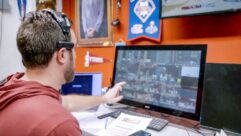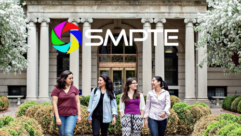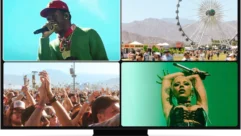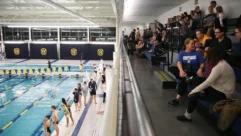
Pitzer College Teaches and Learns from YouTube
Jan 16, 2008 12:00 PM,
By Linda Seid Frembes

The big focus in the education market over the past several years has been the drive to install AV systems into the classroom. With so much hardware available now, it makes sense that the next step is to contemplate content delivery and distribution. While some content providers have made inroads into the market, there lacks the presence and participation of a mainstream media powerhouse such as the popular Google-owned website YouTube. Teachers may have the Internet at their fingertips, but to what end can content serve the educational process?
This past fall semester, students at Pitzer College in Claremont, Calif., got the unique opportunity to enroll in a class dedicated to using, learning from, and analyzing YouTube, best known for homemade videos and clips from funny commercials. Yes, the class is just about YouTube, which caught the attention of national media outlets such as CNN and Fox News.
But before any parallels are drawn between this coursework and, say, underwater basket weaving, it should be noted that Pitzer is a highly ranked institute of higher learning. Pitzer College was named as one of the best colleges in the United States by the 2008 edition of the Princeton Review’s The Best 366 Colleges. It is also ranked 49th overall in the nation among liberal arts colleges in U.S. News & World Report’s 2008 edition of America’s Best Colleges.
Officially titled “Learning from YouTube,” the course was taught by Alexandra Juhasz, professor of media studies, as a “pedagogic experiment focusing on the potentials and limits of digital-media culture.” Professor Juhasz recorded an introduction to the course where she explains, “It’s a class like I’ve never taught before and a class like I’m not certain has ever been taught before.”
She also points out that the class is open to the public, unlike other courses at Pitzer that require a tuition payment in order to attend. “I have no idea where we’re going to go; what we learn will be decided together,” she says in her introduction. For the record, Juhasz says she was hugely underwhelmed by the content on YouTube and did not think it was a successful model for democratic media.
The YouTube class was largely student-controlled, meant to mirror the structure of the site. As for participation in the class, the rules were simple and few. All the class work and assignments such as reading, writing, viewing, and video production had to occur on and about YouTube. The class syllabus, meetings, and other materials were filmed and posted on the site.
“The fact that the course exists says a lot about where I teach,” says Juhasz. “Pitzer is a progressive liberal arts college where there is lots of support for the innovation of academic coursework. I received a high level of support throughout the process of creating and refining the class.”
The class mirrored the structure of Web 2.0 in that the users invented the structure. Juhasz made the decision that the class be open to all students (not just ones in the media studies program) to mirror YouTube’s usership. “There are experts and amateurs alike on the site,” she says. “What was truly different about this class is that we were asking questions about something that was happening right now.”
To conduct the course, Juhasz needed a live, projected Internet feed and a video camera to record each class. Students needed access to the Web and to cameras. “They used everything from webcams to consumer cameras. The school also had loaner cameras,” she says. “Some students were new to video production and were scrambling to learn video technology and techniques.”
Juhasz did not give specific instructions on AV or lighting, but rather graded on analysis and not necessarily the quality of the media. “Our discussion centered around the design and architecture of YouTube itself. For example, we tried to do an online class on YouTube but it was impossible since the site is not built to function in that way,” she says. “You cannot link things together like 10 videos of a common theme and build arguments around it. Without that functionality, YouTube is primarily for entertainment.”
Juhasz points out that one of the standards of academic discourse is lengthy arguments. “But YouTube forces you to summarize and distill your message into sound bites,” she says. “Imagine how we would communicate if we could only teach at 2 minutes at a time. Summarizing is fine for some, but not all, things.”
She says she thinks that the students learned not only about the website, but also gained the ability to think and analyze on their feet without an expert telling them of the structure of thinking. So where does she go from here? Facebook? MySpace? “My academic work is focused on video; what it means for everyday people to have access to video production and distribution,” says Juhasz, who adds that she will probably not offer the course again. “I am going to sites where video is helping to build communities and foster discussion.”










